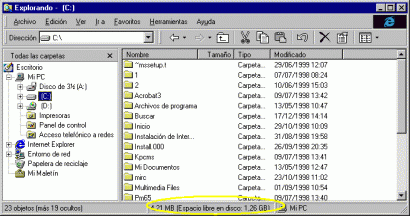 Figurative language is part of our everyday communication. It is the way of speaking in which one idea is communicated through another and the terms used have a relationship with the original idea. This form of language is also known as the figurative sense and is widely used in literary texts, especially poetry. The figurative sense is opposed to the literal sense, in which words are used with their strict meaning.
Figurative language is part of our everyday communication. It is the way of speaking in which one idea is communicated through another and the terms used have a relationship with the original idea. This form of language is also known as the figurative sense and is widely used in literary texts, especially poetry. The figurative sense is opposed to the literal sense, in which words are used with their strict meaning.
Thus, in a literal sense we would say "I'm very thirsty" and in a figurative sense we would say "I'm dying of thirst." In general, the figurative sense is used to give language a special expressiveness and at the same time it is a way of saying something with a certain intensity and originality. It is also used to give an image of an idea.
Expressions that one is limited
Consider someone who wants to say something but decides to hold back for some reason. In this case, it would be said that he "bites his tongue" (here the image of biting his tongue is equivalent to being silent). These types of phrases do not have difficulty among the speakers of a language, although they can create confusion among those people who are learning a language. It is very likely that a foreigner with little command of Spanish will be confused with statements such as “dying of hunger”, “having a long tongue” or “breaking out laughing”.
Different uses of the figurative sense
When speaking in a colloquial way, those who intervene in a conversation use the figurative sense to emphasize a message or to express an ironic meaning to an idea. Let's imagine that among a group of companions there is one who is characterized by his bad humor and in this circumstance there is someone who affirms "the lion is about to roar" (in this case the individual with a bad humor is referred to).
 In the context of journalistic information, expressions with a figurative sense appear and in this way a greater informative impact is achieved ("Madrid throws the championship overboard" or "the runner reached the finish line in a dusty condition").
In the context of journalistic information, expressions with a figurative sense appear and in this way a greater informative impact is achieved ("Madrid throws the championship overboard" or "the runner reached the finish line in a dusty condition").
In the field of literature
In literature the use of stylistic resources is very frequent, with which it is intended to embellish the language and give it a different dimension from the usual one. In this way, with metaphors, metonymies and other resources it is possible to give words a figurative meaning (for example, “the anguish of the writer in front of the blank page”).
It is in poetry where the figurative sense acquires a more elaborate dimension, since the poet associates words with ideas beyond ordinary language.









